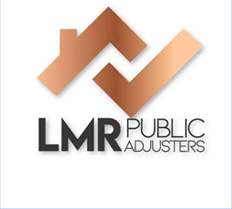Understanding Sewer Line Backup Damage
Let’s be honest—sewer line backups are one of the most unpleasant surprises a homeowner can face. Imagine walking into your basement only to find it flooded with foul-smelling water. Gross, right? But beyond the mess and the stench, sewer backups can cause serious damage to your property and belongings. That’s why knowing how to file a claim for sewer line backup damage is crucial.
So, what exactly is a sewer line backup? In simple terms, it happens when wastewater can’t flow away from your home due to a blockage or damage in the sewer line. Instead, it reverses course and comes back up through your drains. This can be caused by tree roots, aging pipes, grease buildup, or even heavy rainfall overwhelming the municipal system.
Now, here’s the kicker: not all homeowners insurance policies automatically cover sewer backups. That’s why it’s important to review your policy and understand your coverage. If you’re unsure, check our FAQ section or reach out to LMR Public Adjusters—South Florida’s premier public adjusters. We advocate for property owners like you to maximize insurance claims with a personalized, dedicated team.
When sewer backup strikes, time is of the essence. The longer you wait, the more extensive the damage can become. From structural issues to mold growth, the risks are real. That’s why it’s essential to act fast, document everything, and file your claim correctly. Don’t worry—we’ll walk you through the entire process step-by-step.
And if you’re dealing with other types of property damage, like water damage or mold damage, we’ve got you covered there too. But for now, let’s dive into the nitty-gritty of filing a sewer backup claim.
Step 1: Assess the Damage Immediately
First things first—don’t panic. Take a deep breath (preferably not too deep if the smell is overwhelming) and assess the situation. Your safety comes first. If the backup involves contaminated water, avoid direct contact. Wear gloves, boots, and a mask if you have them. Turn off electricity in affected areas to prevent hazards.
Once it’s safe, start documenting everything. Take clear photos and videos of the damage from multiple angles. Capture the affected rooms, furniture, flooring, and any personal belongings that were damaged. This visual evidence will be crucial when you file your claim.
Make a list of all damaged items, including their estimated value and purchase date if possible. Receipts or bank statements can help back up your claims. If you’ve had previous repairs or maintenance done on your plumbing, gather those records too. They can help prove that the backup wasn’t due to negligence on your part.
Next, try to identify the source of the backup. Is it isolated to one drain, or are multiple fixtures affected? This can help determine whether the issue is within your property or part of the municipal system. Either way, you’ll need a professional plumber to inspect the line and provide a written report. This report will be a key piece of evidence for your insurance claim.
And remember, you don’t have to go through this alone. LMR Public Adjusters can help you assess the damage and guide you through the next steps. We’ve helped countless homeowners in Fort Lauderdale, Hollywood, and beyond get the compensation they deserve.
Step 2: Contact Your Insurance Company
Once you’ve documented the damage, it’s time to notify your insurance company. Don’t delay—most policies require prompt reporting of any damage. Call your insurer’s claims department and provide a brief overview of the situation. Be honest and concise. Let them know you’ve taken steps to mitigate further damage and that you’ll be submitting documentation shortly.
During this call, ask the following questions:
- Is sewer backup covered under my policy?
- Do I have a sewer backup endorsement or rider?
- What is my deductible?
- What documentation do you need from me?
Keep a record of the call, including the date, time, and name of the representative you spoke with. Follow up with an email summarizing the conversation. This creates a paper trail in case there are any disputes later on.
Next, your insurer will likely assign an adjuster to your case. This is where things can get tricky. Insurance adjusters work for the insurance company—not for you. Their goal is to minimize the payout. That’s why it’s smart to have your own advocate in your corner. LMR Public Adjusters works exclusively for property owners, not insurers. We’ll make sure your claim is properly valued and that you get every dollar you’re entitled to.
We’ve helped clients in Pembroke Pines, Plantation, and Parkland navigate the claims process with ease. Don’t let the insurance company lowball you—get expert help from the start.
Step 3: Mitigate Further Damage
Insurance companies expect you to take reasonable steps to prevent further damage after a sewer backup. This is known as “mitigation.” If you don’t, they may deny part of your claim. So, what does mitigation look like in this case?
Start by stopping the source of the backup. If water is still coming in, call a plumber immediately. They may need to snake the line, use a camera to inspect the pipes, or even dig up part of your yard to access the main line. Whatever it takes, get the flow under control.
Next, remove standing water using a wet/dry vacuum or pump. Open windows and use fans or dehumidifiers to dry out the area. Dispose of contaminated items like carpets, drywall, and insulation that can’t be salvaged. These materials can harbor bacteria and mold, posing health risks.
Speaking of mold, it can start growing within 24-48 hours. If you notice any signs—musty smells, discoloration, or fuzzy patches—call in a mold remediation expert. And don’t forget to document all cleanup efforts. Keep receipts for equipment rentals, cleaning supplies, and professional services. These costs may be reimbursable under your policy.
Need help finding reliable contractors? LMR Public Adjusters has a network of trusted professionals across South Florida, from Miramar to Aventura. We’ll connect you with the right people to get your home back in shape.
Step 4: File Your Claim with Confidence
Now comes the paperwork. Filing a sewer backup claim involves submitting a detailed report to your insurance company. This should include:
- A written description of the incident
- Photos and videos of the damage
- Receipts and invoices for repairs and cleanup
- The plumber’s inspection report
- An inventory of damaged items with estimated values
Make sure your documentation is organized and easy to follow. Include dates, times, and any relevant correspondence with contractors or your insurer. The more thorough you are, the stronger your claim will be.
Feeling overwhelmed? You’re not alone. That’s why many homeowners turn to LMR Public Adjusters for help. We’ll handle the paperwork, negotiate with the insurance company, and fight for the maximum payout. Our team has years of experience dealing with sewer backup claims, and we know how to navigate the system.
We’ve helped clients in Dania Beach, Lake Worth, and Weston recover thousands of dollars in damages. Let us do the same for you.
Step 5: Follow Up and Stay Informed
After you file your claim, don’t just sit back and wait. Follow up regularly with your insurance company to check the status. Keep a log of all communications, including emails and phone calls. If they request additional information, respond promptly and keep copies of everything you send.
If your claim is approved, review the settlement offer carefully. Does it cover all your damages? Are the repair estimates accurate? If something doesn’t add up, don’t be afraid to push back. This is your home and your money on the line.
And if your claim is denied or underpaid, don’t lose hope. You have the right to appeal. Check out our blog for tips on how to dispute a claim, or better yet, let LMR Public Adjusters take the reins. We’ll review your case, gather additional evidence, and fight for a fair resolution.
We’ve helped homeowners across Hollywood, FL, Pinecrest, and Pompano Beach get the settlements they deserve. You don’t have to accept less than what you’re owed.
Conclusion
Dealing with a sewer line backup is never fun, but knowing how to file a claim can make all the difference. From assessing the damage and contacting your insurer to mitigating further loss and submitting documentation, each step is crucial. And remember, you don’t have to go it alone. LMR Public Adjusters is here to help you every step of the way. We’re South Florida’s premier public adjusters, dedicated to advocating for property owners and maximizing insurance claims with a personalized, dedicated team.
Whether you’re in South Florida or beyond, don’t let a sewer backup drain your finances. Get expert help, file your claim with confidence, and get your home back to normal—fast.
What causes a sewer line backup?
Sewer backups can be caused by tree roots invading pipes, grease buildup, aging infrastructure, or heavy rainfall overwhelming the municipal system. Identifying the cause is key to filing a successful claim.
Does homeowners insurance cover sewer line backups?
Not always. Standard policies often exclude sewer backups unless you’ve added a specific endorsement. Check your policy or consult with LMR Public Adjusters to understand your coverage.
How can I prevent sewer backups in the future?
Regular maintenance, avoiding flushing grease or non-flushable items, and installing a backwater valve can help prevent backups. Periodic inspections by a plumber are also a smart move.
How long does it take to process a sewer backup claim?
It varies. Some claims are resolved in a few weeks, while others can take months, especially if there are disputes. Working with a public adjuster can speed up the process and ensure fair compensation.
Why should I hire a public adjuster for my sewer backup claim?
Public adjusters like LMR Public Adjusters work for you, not the insurance company. We handle the paperwork, negotiate on your behalf, and fight to get you the maximum payout. It’s peace of mind when you need it most.




